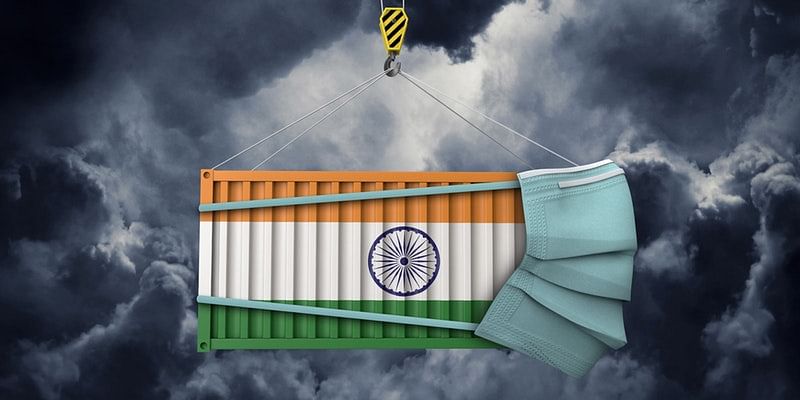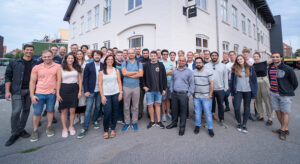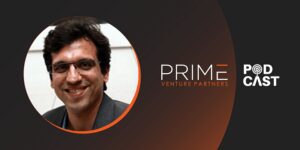As India rages a fight against the deadly second wave of COVID-19, it is extremely important for us to understand this disease better, and take every possible step to curb its spread. And in a bid to support India amid this crisis, US-based healthcare companies Akos MD India and Apricus Medical Group have joined hands together to provide free tele consultation to everyone across the country.
Dr. Kishlay Anand, Chairman of Akos MD, said that the US-based healthtech startup stands with the country among the crisis and is ensuring access to quality healthcare. One can schedule appointments with verified physicians at Akos here.
In an exclusive conversation with YS, California-based Dr. Kishlay shares his views on the current situation in India, and what needs to be done at multiple levels in order to deal with the crisis.
Dr. Kishlay Anand MD MS, Chairman, Akos MD Chairman [Image Credit: LinkedIn]
Here are the key highlights from his conversation with YS Founder and CEO, Shradha Sharma. (We are publishing his words, near verbatim)
What is viral load and why is it different for different people?
As you know, when a virus goes through the submucosa and enters the system, the first aspect is how much is the contaminant load on the person. Certain people, who are in healthcare, are exposed to a higher load of virus. Once it enters into the body, depending on the immunity of different people, it translates into different amounts of virus replication inside the body and leading to different virus loads.
The virus load factor was studied during the AIDS period and the same concept has come into COVID-19. High virus load is typically associated with higher pathogenesis and a more serious infection.
There are multiple factors, including virus load at the start of the infection, how the virus is replicating inside the body, and how the immune system is fighting the virus.
Why is the second wave more severe on young people in India?
Learning from the experience of the Spanish flu, with each mutation, the virulence level changes. Initially, during COVID-19’s early form of mutation, it was mostly affecting people with co-morbidities.
Now, with the new mutation, its virulence has increased, and as the pathogenesis is basically discarding the body’s immunity, we are seeing it is affecting young people, even those without co-morbidities.
Reason behind the fast mutations of the coronavirus
The virus is very contagious and its R-factor (Resistance transfer factor) has also changed and increased with the mutations. So, from each infected person, the amount of contagion that can spread is higher.
There are two types of shifts that have happened, antigenic drift and shifts. The more time the virus gets the opportunity to spread within the population, the higher the chances of more mutations happening.
Listen to the entire conversation here:
What does India need to do right now?
The need comes from multiple levels – one is what we can do at the individual and family level; secondly at the local administration level; and thirdly, what needs to be done at a much higher level.
At the individual level, what we need to do is to comply with the local authority guidance and take all the safety precautions. Learning from US experience, we went into a lockdown, we all stayed home, and proper PPE precautions were provided to the healthcare workers. When we opened up, people were still taking all the precautions. These simple but important precautions need to be taken at an individual level.
At a higher level, with the current situation in India, logistics and supply chain in the healthcare sector needs to be improved. This is a time for us as a country to rethink our healthcare, and we need to invest in our health infrastructure to be future ready.
Key supplies such as oxygen running out might be more of a logistics and supply chain issue which happened in this situation and we need to better manage it. We need to have those plans of action and have decentralised local preparedness centres for disaster. Similar to that of natural disasters, for pandemic as well, we need to have local action plans.
Lastly, vaccination in the US has led to the biggest turnaround. It’s still an ongoing process but we feel that by vaccinating the population at a larger scale, we will be able to create immunity protection. Once it gets into the herd immunity situation, the virus spread, and the effect, gets under control.
Impression on anti-virals
From the experience of the AIDS epidemic, we were able to develop anti-virals that proved to be very effective and could halt the replication of the virus inside the body. Though COVID-19 has been here for one year, I think it is highly possible that we have several classes of anti-viral working on different parts of the COVID-19 virus life cycle.
Israel is already doing trials currently on an anti-viral, similarly, we will see two to three more classes of anti-virals coming in which will slow down the progress and reduce the viral load.
Vaccination is important
If we go back and learn from the history of diseases such as polio, vaccines have been extremely effective in controlling infectious diseases. In the case of COVID-19, we need to have better communication and educate people that this is the way to go.
COVID-19 vaccines have gone through rigorous trials, and have been proven to be safe. They do have certain side effects in terms of local allergic reactions, and these can definitely not be sidelined. At the same time, at a larger scale, they have been very effective and will halt the current situation in India.
I would encourage people to learn from the past and everyone needs to go and get vaccines. Vaccination is not just for the people taking it, but also for people around them and to stop the virus.
Also, having a healthy diet and lifestyle, nutritious food, regular exercises will help in improving immunity.
Giving back
Amid the pandemic, we felt that virtual health is the key way to deliver access to healthcare. In the US too, we are seeing disparity in access to healthcare, and the only way to reach the entire population is through virtual care.
I started a company named Akos MD, where we created a virtual primary care solution as primary care infrastructure is severely lacking not only in India but also in the US. We feel that primary care is the gatekeeper to healthcare, and if you can have strong primary care focused on wellness, it can reverse the disease cycle.
Akos MD focuses on virtual primary care and allows one-to-one relationships between patients and healthcare providers. It gives them a 360-degree approach from a healthcare, psychological, and general wellness perspective.
I started Akos MD in the US, but realising the need in India, we also launched Akos India, and given the pandemic situation, it is important to enable people access to consultation from home.
Learnings from the US which India can implement
Leadership is the key in any crisis situation where the leader needs to be in front of things and have a plan. I believe the Indian government has a disaster preparedness group ready and is reviewing the situation, but the messaging needs to be frequent and direct to people.
In terms of lockdown, the effort needs to be supported all across the country for controlling the virus. We also noticed that while we were able to get COVID-19 supplies sourced from the world, it got stuck due to logistics related issues. We hope the government provides the support to develop the logistics to get the supply to grassroot level.
As a part of emergency preparedness, we need to have a plan of action to get vaccines prepared and distributed. At the same time, supply chain issues around oxygen, and the drug Remdesivir needs to be solved. All of it comes down to policy at both central and state government level. Both need to work hand-in-hand and there shouldn’t be any political issues. Both need to work with local infrastructure and support them around healthcare needs.










